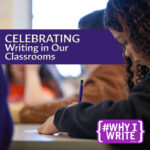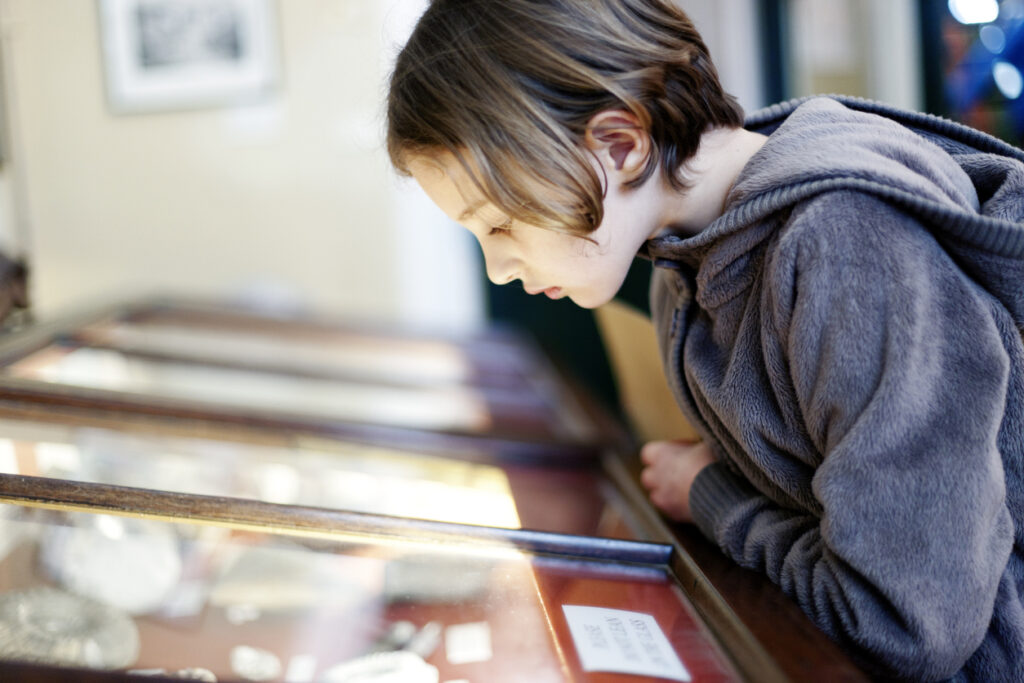 This blog post was written by NCTE member Bronwyn Baker as part of a blog series celebrating the National Day on Writing®. To draw attention to the remarkable variety of writing we engage in and to help make all writers aware of their craft, the National Council of Teachers of English has established October 20 as the National Day on Writing®. Resources, strategies, and inclusion in a blog post does not imply endorsement or promotion by NCTE.
This blog post was written by NCTE member Bronwyn Baker as part of a blog series celebrating the National Day on Writing®. To draw attention to the remarkable variety of writing we engage in and to help make all writers aware of their craft, the National Council of Teachers of English has established October 20 as the National Day on Writing®. Resources, strategies, and inclusion in a blog post does not imply endorsement or promotion by NCTE.
In a fourth-grade classroom where students have previously experienced prep writing for STAAR, choice writing brings joy. STAAR is the standardized test in the state of Texas that students in grades 3–12 take. It also seems to be the thief of joy. In the beginning of the school year, students were introduced to writing notebooks: a space where they get to write about whatever they want each day and collect memories, ideas, observations, etc. Through a series of mini-lessons on how to get started writing, their notebooks are flourishing with a variety of entries. After a few weeks of “living” in these notebooks, they are introduced to the idea that we are going to explore one idea to take through the writing process. A task I was nervous might cause anxiety was instead met with excitement, and students were sharing ideas from their pages. The total choice was the enabler that alleviated the struggle of what to write about. Every child had an idea.
Through a series of lessons inspired by the Heart of Texas Writing Project, the students worked to collect in a variety of ways more entries connected to their ideas. Some collections included plot diagrams, dialogue, and short stories of their piece. One in particular seemed to grow students’ thinking about their pieces: Randy Bomer’s “Museum,” from his book Building Adolescent Literacy in Today’s English Classrooms (2011). Students were tasked with designing a museum exhibit of their story. Fortunately for this class, we had taken a field trip to a museum a few days prior and were able to have a shared experience to engage with. As the teacher, I shared with them “Museum of Donkey Bite,” the story I was crafting alongside theirs in my mini-lesson. Some of the objects I included were a donkey with big teeth, the Fall Festival banner, my hand with a carrot, the sink where I washed my hand off originally, and the hospital cross. The students were eager to share other objects I could include, pushing me to think of ways to include audio elements. One student added a hands-on component, suggesting the sink in my museum should be able to be turned on and the water would slowly turn from clear to stained red in order to bring my story to life. After this group creation of the museum, students were eager to get to work in their notebooks. However, in typical mini-lesson fashion, before we left the carpet, we shared some of the ideas we had and then off to work we went. Boy, oh boy, was this an energizing day! Students were not only focused on designing their exhibit, they were sharing abundantly their creations with their classmates.
As I guided a few students through the strategy, one student who previously resisted writing was eager to add words to his museum. He wanted to add a sentence or two to each “object,” included to explain what they were and how they were connected to his story. Through this work, I had this realization that this work could become a standalone writing piece, like an informational book or even a picturebook. Another student asked if they could make this museum a part of their writing. This led to the idea that these “museums” should become a part of our publishing party to bring visuals to their writing.
While this project was originally just a strategy to collect ideas connected to writing pieces, we took it and ran! The museums guided our stories, supported our details, and lifted our work from sequential events to engaging writing. They were referred to throughout the revision stage of the writing process, and some museums were even revised alongside the writing piece. Ultimately, the museums served as a checkpoint to bring our writing to life.
As we transition into our next writing piece, students are required to write an informational piece; however, we will be carrying with us the strategy of collecting our museum artifacts as we explore our topics and ideas.
Hello, I am Bronwyn Baker. I am in my eighth year of teaching fourth grade: five years in San Francisco Unified School District and now three years in Austin Independent School District. I am simultaneously a grad student at the University of Texas working on my master’s in Curriculum and Instruction: Language and Literacy focused. A key component of who I am as a writing teacher is inspired by the Heart of Texas Writing Project and Summer Institute. In addition to teaching and growing my practice, I enjoy spending time in nature with my dog, River!
It is the policy of NCTE in all publications, including the Literacy & NCTE blog, to provide a forum for the open discussion of ideas concerning the content and the teaching of English and the language arts. Publicity accorded to any particular point of view does not imply endorsement by the Executive Committee, the Board of Directors, the staff, or the membership at large, except in announcements of policy, where such endorsement is clearly specified.

